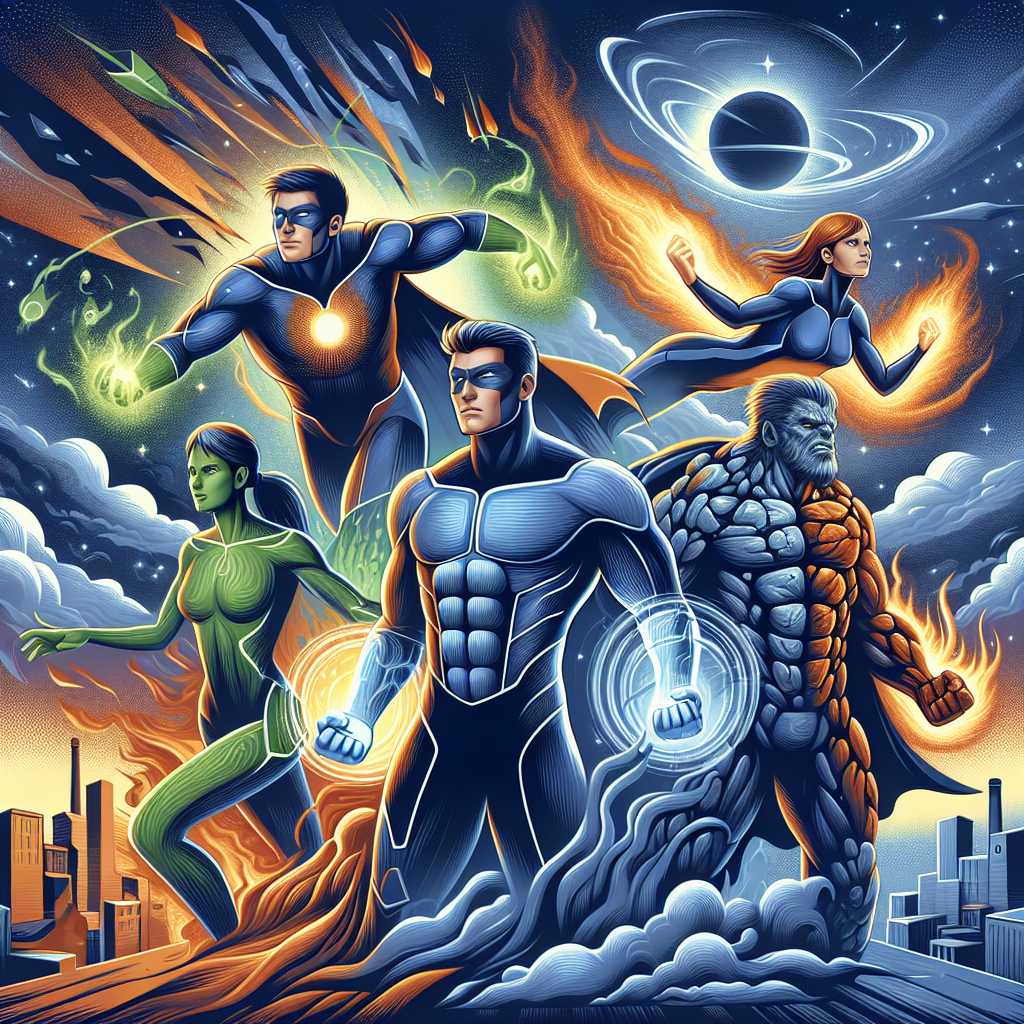The Timeless Allure of Marvel’s Fantastic Four: Exploring the Super Family’s Legacy as Comic Book Icons
The Fantastic Four, conceptualized by writer Stan Lee and artist Jack Kirby, has been an indispensable part of the Marvel comic book universe since its inception in 1961. With its unique mix of sci-fi adventure, family dynamics, and moral challenges, the group has captivated readers for generations and played a crucial role in the evolution of superhero narratives. This article delves into their origins, impact, and ongoing relevance in popular culture.
Origin and Creation of Fantastic Four
Marvel’s First Family, the Fantastic Four, emerged when the comic book industry was dominated by caped crusaders and masked vigilantes. Aimed at providing a fresh narrative to Marvel’s lineup, the Fantastic Four served as pioneers altering the landscape of superhero stories.
Conception and Debut
Stan Lee and Jack Kirby sought to craft a team that would resonate with an audience yearning for more relatable characters. Their efforts culminated in “The Fantastic Four” #1, where readers were introduced to scientist Reed Richards (Mr. Fantastic), his fiancée Susan Storm (The Invisible Woman), her brother Johnny Storm (The Human Torch), and pilot Ben Grimm (The Thing). Gaining superpowers after cosmic rays alter their genetic structure, they chose to use these abilities for the betterment of humanity.
Character Dynamics and Evolution
What set the Fantastic Four apart from their contemporaries was their depiction not as mere colleagues but as a family with complex relationships. The interplay between Reed’s intellectualism, Sue’s compassion, Johnny’s brash youthfulness, and Ben’s struggle with his newfound appearance granted depth to their adventures that unfolded both on Earth and across galaxies.
Impact and Influence on Superhero Genre
The innovative approach of injecting human vulnerabilities into the superhero archetype captured fans’ imaginations. The characters faced real-world issues such as mistrust, jealousy, and the fears of alienation while combating fantastical threats. This gave audiences more than just action; it provided stories they could empathize with.
The Fantastic Four in Modern Media
Over time, the prominence of the Fantastic Four led to their adaptation across various forms of media. From animated cartoons to live-action films, each iteration has endeavored to encapsulate the essence of the original comic book series.
Animated Series Adaptations
Throughout several animated series beginning in the 1960s, Marvel brought its iconic team to Saturday morning TV screens. The versions varied in faithfulness to the source material but aimed to introduce the characters to younger audiences who might not be comic book readers.
Live-Action Film Attempts
There have been multiple efforts to translate the Fantastic Four’s adventures to cinema. Early adaptations in 1994 and 2005 garnered mixed reviews, struggling to encapsulate the group’s blend of superhero antics and familial bonds satisfactorily. However, these films helped pave the way for future attempts at perfecting their representation on screen.
Continued Relevance and Future Prospects
The Fantastic Four remain a focal point in discussions of upcoming film franchises integrated within Marvel’s Cinematic Universe (MCU). As Marvel Studios continues expanding its on-screen offerings post-Infinity Saga phase, there are growing anticipations for how the First Family will be revitalized for a modern audience within this established cinematic context.
Influence on Comic Book Culture and Popularity
The enduring popularity of the Fantastic Four can also be traced to its revolutionary concepts and thematic richness over the comic series’ history.
Introduction of Iconic Villains
Besides establishing positive tropes within superhero stories, Lee and Kirby introduced formidable antagonists, most notably Doctor Doom—a villain as complex as our heroes. His combination of intelligence, omnipotent ambitions, and personal vendetta against Reed Richards have made him an enduring figure in Marvel canon.
Science Fiction Meets Superheroes
The inclusion of elaborate sci-fi settings such as alternative universes, time travel, and multidimensional threats positioned Fantastic Four at a unique crossroads where science fiction intertwined with bust-ups against supervillainy. Often these tales would touch upon philosophical questions or predictions about humanity’s future – a trademark element that continues to define their expansive storytelling potential.
Notes
Image Description: Concept art illustration featuring the core members of the Fantastic Four team. Mr. Fantastic stretches into action at the forefront while The Invisible Woman showcases her power nearby. On one side The Human Torch can be seen blazing up into flight while on the other side The Thing stands firmly displaying his strength with clenched fists ready for battle amidst a backdrop signifying high adventure such as a cityscape or otherworldly terrain to capture their dual capabilities for both urban heroics and cosmic expeditions.
